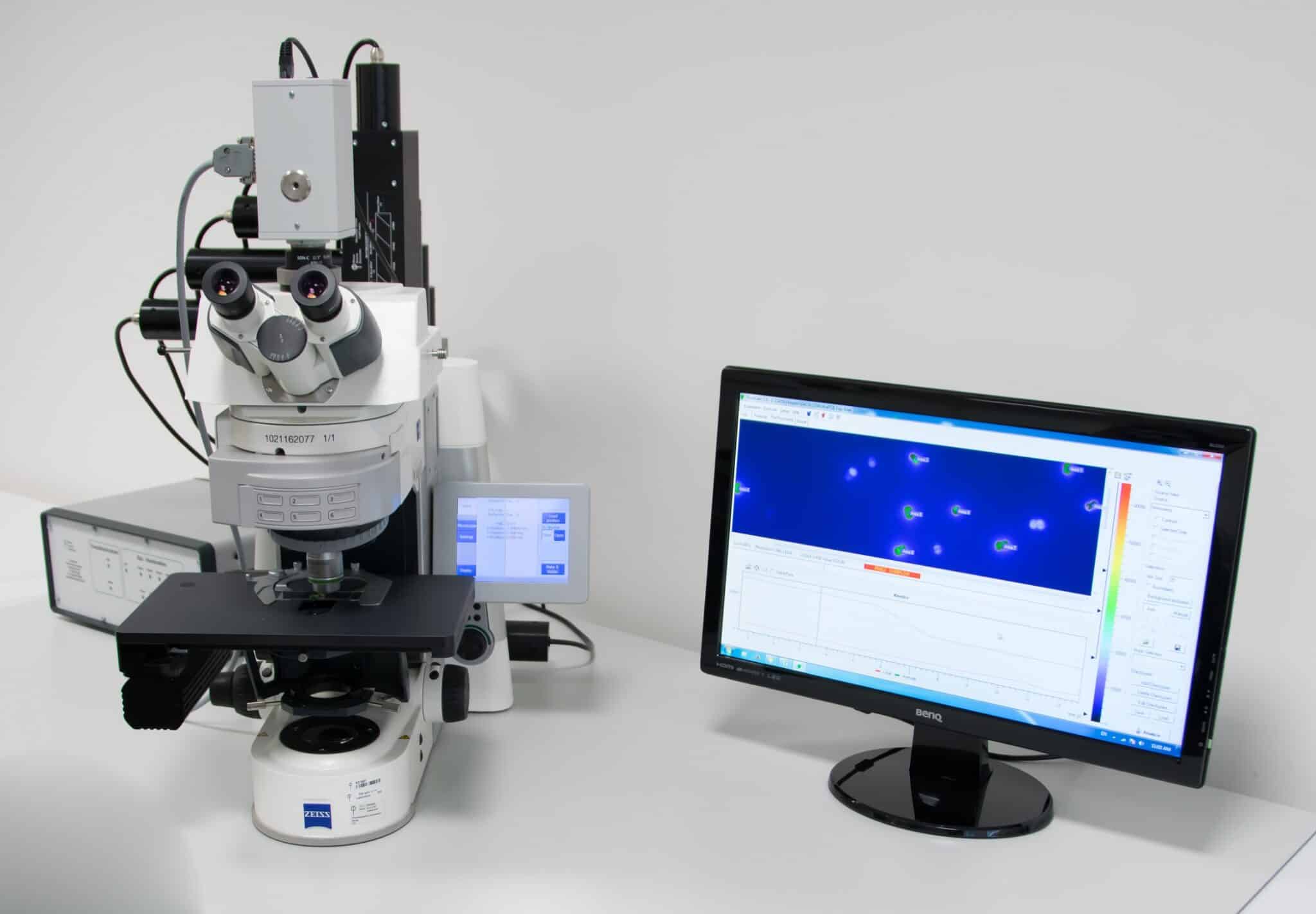About Fluorescence Microscopy:
- A fluorescence microscope views an object by studying how it re¬emits light that it has absorbed, i.e., how it fluoresces. This is its basic principle.
- How it works?
- The object is illuminated with light of a specific wavelength.
- Particles in the object absorb this light and re¬emit it at a higher wavelength (i.e., different color). These particles are called fluorophores.
- The object is infused with fluorophores before being placed under the microscope.
- When the fluorophores fluoresce, a fluorescent microscope can track them as they move inside the object, revealing the object’s internal shape and other characteristics.
- Scientists have developed different fluorophores to identify and study different entities, from specific parts of the DNA to protein complexes.
- Applications of Fluorescence Microscope:
- It is used to image specific features of small specimens such as microbes.
- It is also used to visually enhance 3-D features at small scales.
- It allows the use of multicolor staining, labeling of structures within cells, and the measurement of the physiological state of a cell.
- It is the most popular method for studying the dynamic behavior exhibited in live-cell imaging.
- Different molecules can now be stained with different colors, allowing multiple types of molecules to be tracked simultaneously.
What is Optical Microscopy?
- An optical microscope, also known as a light microscope, views an object by studying how it absorbs, reflects, or scatters visible light.
- It uses one or a series of lenses to magnify images of small samples with visible light.
- The lenses are placed between the sample and the viewer’s eye to magnify the image so that it can be examined in greater detail.
Q1) What is Transmission electron microscopy (TEM)?
Transmission electron microscopes (TEM) are microscopes that use a particle beam of electrons to visualize specimens and generate a highly-magnified image. TEMs can magnify objects up to 2 million times.
Source: Scientists devise ‘glowscope’ to bring fluorescent microscopy to schools
Last updated on December, 2025
→ Check out the latest UPSC Syllabus 2026 here.
→ Join Vajiram & Ravi’s Interview Guidance Programme for expert help to crack your final UPSC stage.
→ UPSC Mains Result 2025 is now out.
→ UPSC Notification 2026 is scheduled to be released on January 14, 2026.
→ UPSC Calendar 2026 is released on 15th May, 2025.
→ The UPSC Vacancy 2025 were released 1129, out of which 979 were for UPSC CSE and remaining 150 are for UPSC IFoS.
→ UPSC Prelims 2026 will be conducted on 24th May, 2026 & UPSC Mains 2026 will be conducted on 21st August 2026.
→ The UPSC Selection Process is of 3 stages-Prelims, Mains and Interview.
→ UPSC Result 2024 is released with latest UPSC Marksheet 2024. Check Now!
→ UPSC Prelims Result 2025 is out now for the CSE held on 25 May 2025.
→ UPSC Toppers List 2024 is released now. Shakti Dubey is UPSC AIR 1 2024 Topper.
→ UPSC Prelims Question Paper 2025 and Unofficial Prelims Answer Key 2025 are available now.
→ UPSC Mains Question Paper 2025 is out for Essay, GS 1, 2, 3 & GS 4.
→ UPSC Mains Indian Language Question Paper 2025 is now out.
→ UPSC Mains Optional Question Paper 2025 is now out.
→ Also check Best IAS Coaching in Delhi

















